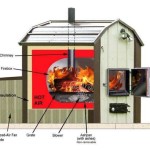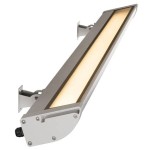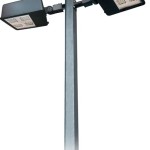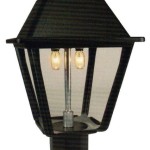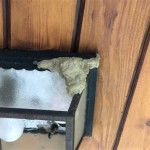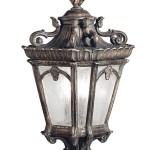How to Install an Outdoor Electrical Box
Installing an outdoor electrical box is a common DIY project that can enhance your home's functionality. This box provides a secure and weather-resistant housing for electrical outlets, switches, and other wiring components, allowing you to power outdoor lighting, landscaping features, or appliances. This guide outlines the essential steps involved in installing an outdoor electrical box, ensuring you complete the project safely and efficiently.
1. Planning and Preparation
Before starting any electrical work, it's crucial to prioritize safety. Always disconnect power to the circuit you are working on at the breaker box. Ensure the area is well-lit and free of obstructions. Gather the necessary tools and materials, including:
- Outdoor electrical box (select a size and type suitable for your application)
- Non-metallic sheathed cable (NM cable or Romex)
- Wire strippers
- Wire connectors (wire nuts)
- Voltage tester
- Screwdriver
- Drill with appropriate bits
- Level
- Measuring tape
- Safety glasses
- Work gloves
Determine the location for the box based on your needs and ensure it complies with local electrical codes. Ensure the chosen location is easily accessible and far enough from potential water sources, such as sprinklers or downspouts.
2. Running the Electrical Cable
Once the location is selected, you'll need to run the electrical cable from the main power source to the box. This process involves drilling holes in walls, studs, or other structures to pass the cable through.
- Wall or Ceiling: Drill a hole slightly larger than the cable diameter to feed the cable through a wall or ceiling.
- Ground: When running cable underground, use conduit or a direct burial cable for protection. This type of cable has a protective jacket designed for underground installation.
- Cable Clamps and Stapling: Secure the cable in place using cable clamps or staples, ensuring it's properly supported along the path.
Remember to use the appropriate type of cable for outdoor applications and ensure the cable length is sufficient to reach the box.
3. Mounting the Electrical Box
The next step is to mount the outdoor electrical box in the chosen location. This process typically involves attaching the box to the wall or structure using screws or other fasteners.
- Mark the Location: Use a pencil to mark the desired location on the wall or structure, ensuring it is level and in a safe position.
- Pre-drill Holes (if needed): If you are drilling into concrete, brick, or other hard surfaces, use a drill with a masonry bit and pre-drill holes for the screws.
- Attach the Box: Securely attach the box to the wall or structure using screws or other fasteners provided with the box. If using a plastic box, it's important to choose screws compatible with the box material.
Before installing the box, ensure the area is free of obstructions, such as pipes or other wiring.
4. Connecting the Electrical Wiring
After mounting the box, it's time to connect the electrical wiring. This involves stripping the insulation off the ends of the wires and connecting them to the appropriate terminals within the box.
- Strip Wires: Strip the insulation off the ends of the cables using wire strippers, exposing a sufficient amount of bare wire for the connections.
- Connect to Terminals: Connect the wires to the appropriate terminals within the box. Ground wires are typically connected to a green terminal, and "hot" wires (black) and "neutral" wires (white) are connected to the corresponding terminals.
- Secure Connections: Ensure all connections are secure and properly tightened. Use wire connectors or wire nuts to secure the connections.
Always check the electrical code for your area and follow the manufacturer's instructions for your specific box and components.
5. Installing the Cover Plate and Outlets
Once the electrical wiring is connected, install the cover plate and outlets, if needed. This process involves attaching the cover plate to the box and securing the outlets to the cover plate.
- Attach Cover Plate: Install the cover plate and ensure it snaps or screws securely onto the box.
- Install Outlets: Install the outlets by attaching them to the cover plate using screws. Ensure they're properly aligned and secured in place.
Before connecting the power, double-check all connections and ensure the wiring is correctly installed.
6. Testing and Restoring Power
After completing the installation, it's essential to test the connections and restore power. This crucial step ensures the work is done correctly and safely.
- Test Connections: Use a voltage tester to verify that the wires are connected to the correct terminals and that there is no voltage present at the outlet or switch before turning on the power.
- Restore Power: Turn on the power at the breaker box and test the outlet or switch to ensure it is working correctly.
If you encounter any issues, carefully check your connections and consult an electrician for assistance.

How To Install An Outdoor Electrical Remodel

How To Install An Outdoor The Home Depot

How To Add An Outdoor Electrical Box Diy Family Handyman

Add An Exterior On A Brick House Homediygeek

Add An Exterior On A Brick House Homediygeek

How To Add An Outdoor Electrical Box Diy Family Handyman
:strip_icc()/SCW_262_07-0649893254904a44a2a78d50d3622086.jpg?strip=all)
How To Extend Power Outdoors

How To Install Outdoor Lighting And Home Electrical Wiring Diy

How To Install An Outdoor Electrical Cover

Protect Your Outdoor Electrical S
Related Posts
